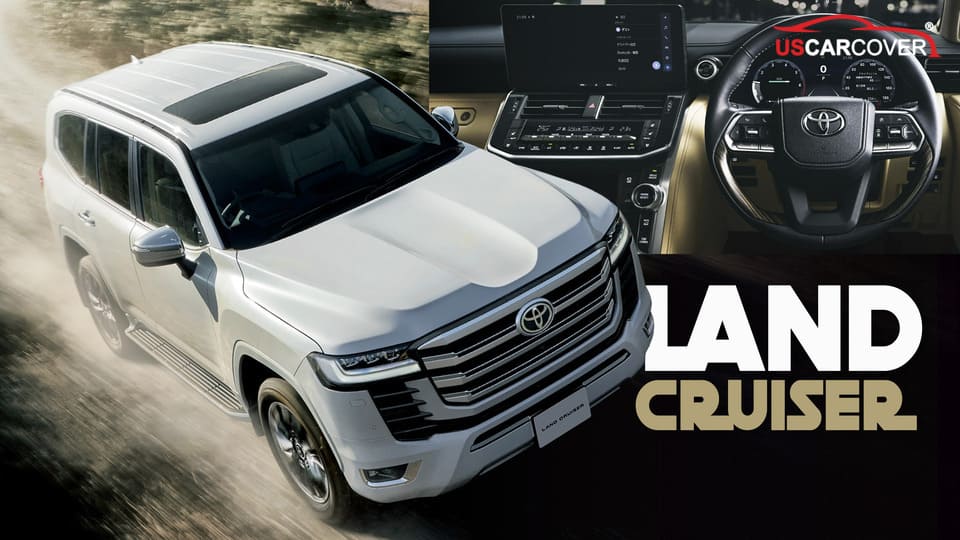
2026 Toyota Land Cruiser LC 300 carries one of the most iconic badges in SUV history, and for good reason. For decades, the Land Cruiser has built a reputation for being nearly indestructible, trusted by adventurers, military forces, and families around the world. It has long stood as a symbol of Toyota’s engineering excellence, combining rugged off-road power with a surprising level of refinement.
Now, with the arrival of the 2026 model, the LC 300 takes that legacy into the modern era. Toyota has refreshed its flagship SUV with advanced technology, updated design, and improved efficiency—all while promising to keep the durability that made it legendary. The big question for American buyers is simple: with competitors like the Jeep Wagoneer and Land Rover Defender vying for attention, is the 2026 Toyota Land Cruiser LC 300 truly worth the investment?
Exterior Design and Presence
As a long-time reviewer, the first thing that strikes me about the 2026 Toyota Land Cruiser LC 300 is how confidently it blends modern styling with its rugged heritage. Toyota clearly leaned into a purposeful, squared-off silhouette that reads both upscale and ready for serious trails.

Up front, the grille is bold and authoritative, carrying the family DNA that signals capability before you even walk around the vehicle. Some trims echo classic Land Cruiser cues like round headlight motifs, while higher trims use more angular LED lighting for a contemporary look. The overall face projects toughness without feeling dated.
From the side, the LC 300 sits with a planted stance. Prominent fender flares, substantial wheel-and-tire packages, and a relatively upright roofline maximize interior volume and off-road clearance. Those design choices are not just aesthetics; they help preserve approach and departure angles and give the vehicle real presence on rough roads. In production form some models come on robust 18-inch trail-focused tires, which underline the serious capability beneath the skin.
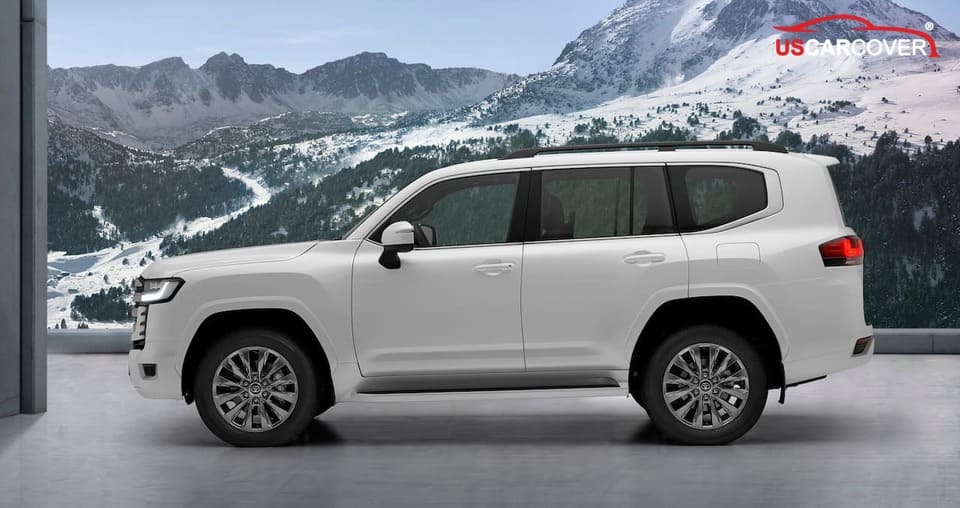
Compared with rivals, the Land Cruiser emphasizes traditional durability and purposeful styling rather than hyper-luxury or showy chrome. Against the Jeep Wagoneer, which leans more toward full-size luxury and road comfort, the LC 300 presents a more utilitarian, go-anywhere image. Versus the Land Rover Defender, the Cruiser tends to favor proven Toyota mechanicals and a body-on-frame approach that appeals to buyers prioritizing long-term reliability and off-road function over a more boutique interior feel.
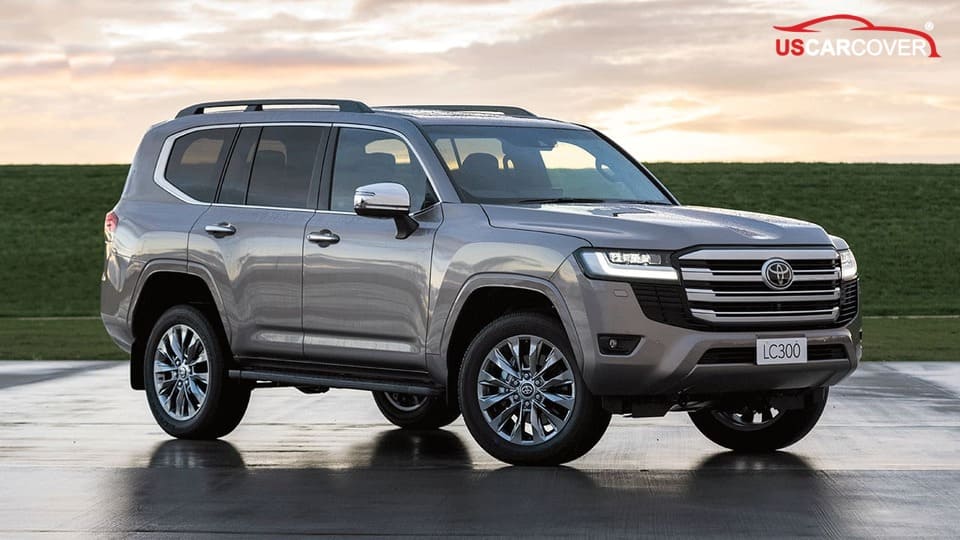
Related Articles: 2026 Toyota Land Cruiser Mini Review: A Veteran Car Reviewer’s First Impressions and Insights
Interior Comfort and Luxury
When I step into the 2026 Toyota Land Cruiser LC 300, the cabin says two things at once: built-to-last toughness and an effort toward real refinement. Higher trims offer ventilated front seats, available leather upholstery, and an upgraded 10-speaker audio system, while even the base trim includes heated seats and a heated steering wheel—little comforts that matter on long trips. Reviewers have also pointed out that some surfaces fall short of true luxury, so expect a mix of premium zones and more utilitarian plastics in less visible areas.
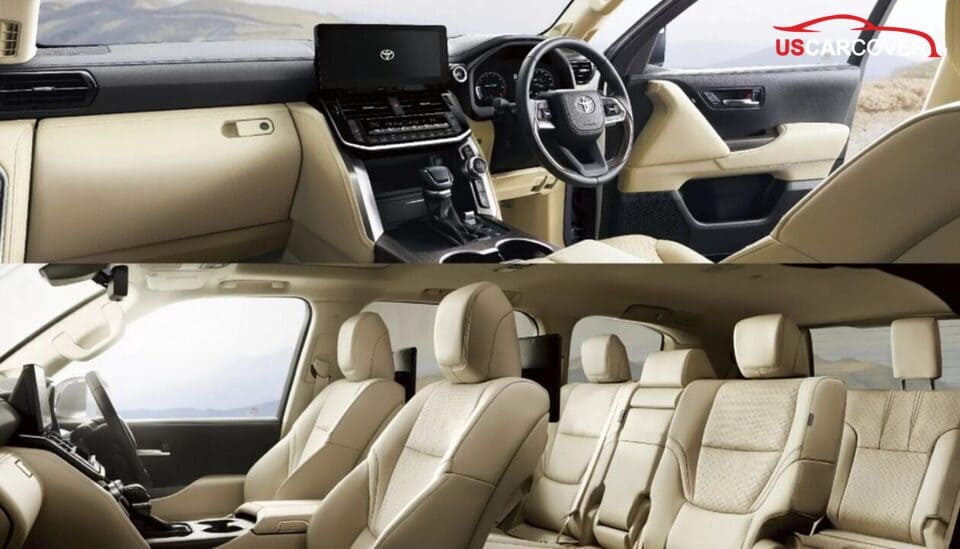
Tech integration is modern and straightforward, exactly what I want in a long-haul SUV. Toyota equips the Land Cruiser with wireless Apple CarPlay and Android Auto, USB-C ports, and a wireless charging pad. Screen size depends on trim, with an 8.0-inch display on lower trims and a larger 12.3-inch touchscreen available on top models, which makes the system feel more up-to-date and usable.
Space and practicality are genuine strengths. The LC 300 seats five comfortably and uses its boxy proportions to deliver generous headroom and cargo capability, making it easy to swap between family duty and weekend gear hauls. Measured cargo figures and real-world packing tests show strong capacity with the rear seats up or folded, so this SUV works equally well for families, serious overlanders, and buyers who want a touch of luxury without sacrificing rugged utility.
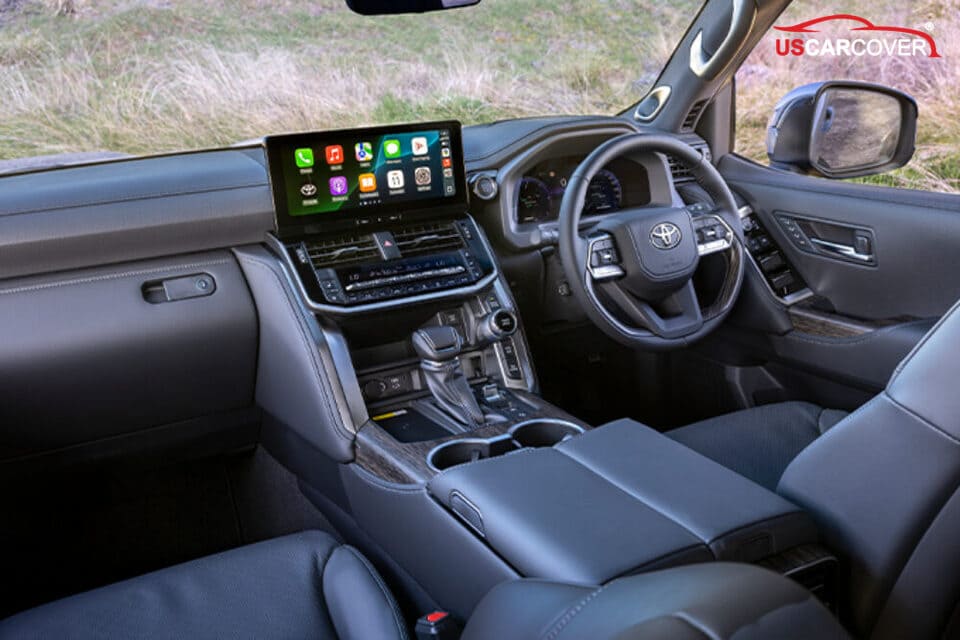
Engine Performance and Driving Dynamics
In the U.S. the 2026 Toyota Land Cruiser LC 300 is offered with Toyota’s i-FORCE MAX 2.4 liter turbocharged four cylinder hybrid, which is rated at about 326 net combined horsepower and roughly 465 pound-feet of torque. These numbers give the LC 300 a strong low-end shove that you can feel off the line and when climbing grades.
Underpinning that power is an automatic transmission and a serious four wheel drive system with low range, a locking center differential, crawl control, and downhill assist. Together these hardware and software elements make the Land Cruiser a genuine off-road tool while still allowing reasonably smooth shifts and confident passing on the highway. The vehicle’s rated tow capacity is competitive for the class at about 6,000 pounds when properly equipped, which makes it useful for trailers and boats if you mind payload and tongue weight.
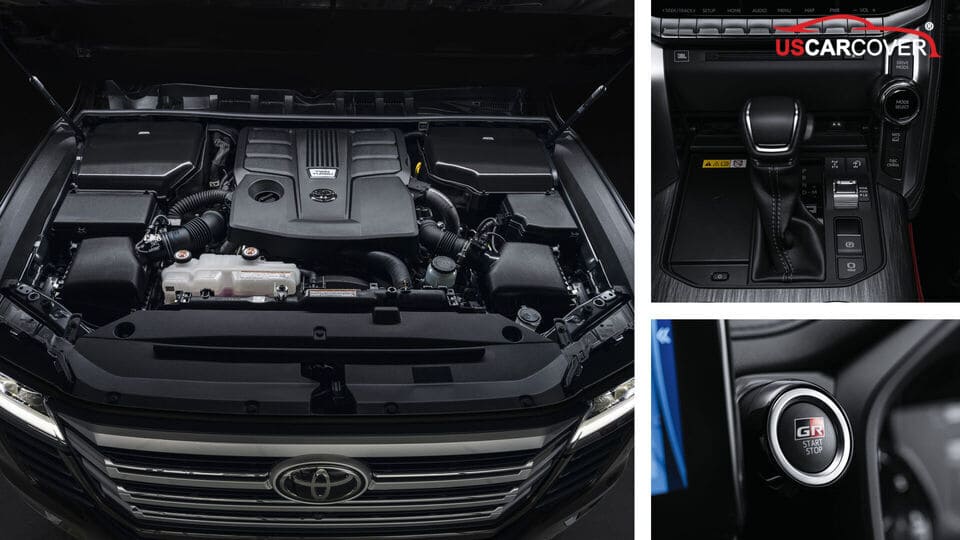
As for driving character, Toyota’s TNGA-F body on frame architecture gives the LC 300 the structural rigidity needed for hard use while also improving ride composure compared with older ladder-frame Cruisers. In practice the Land Cruiser balances workaday off-road competence with surprisingly calm highway manners, though it is still more trucklike than a luxury SUV. Fuel economy for the small turbo hybrid has been in the low to mid 20s miles per gallon in EPA and independent tests for recent model years, so expect similar real-world results depending on trim and driving style. Finally, note that Toyota has introduced higher-output hybrid V6 variants for some global markets, but broader U.S. availability of those V6 hybrids is not yet confirmed.
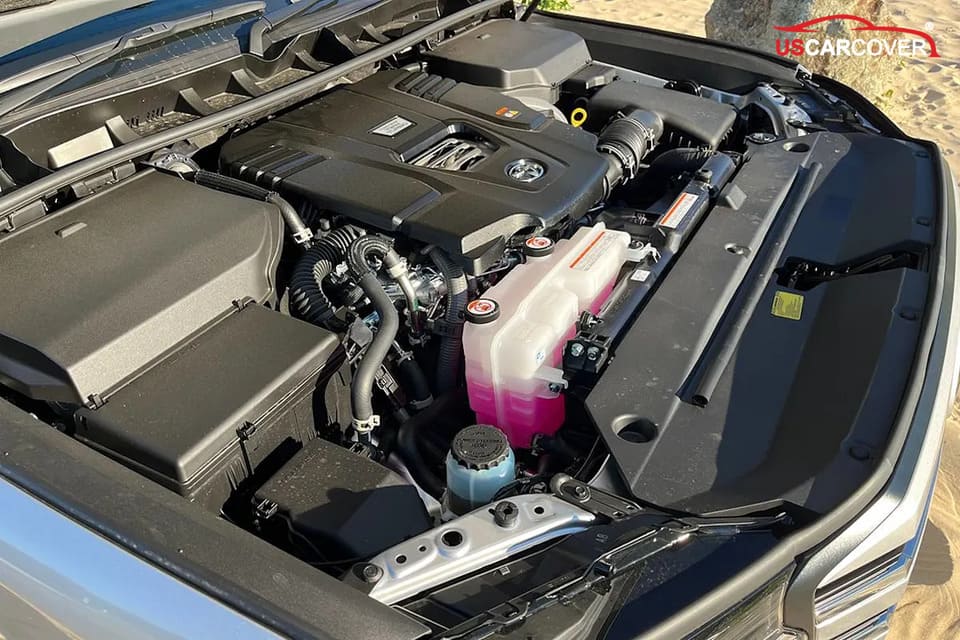
Related Articles: 2026 Ford Mustang Pickup Truck Expert Review: The Future of Performance Pickups
Advanced Technology and Safety Systems
As a long-time reviewer, what I appreciate about the LC 300 is that Toyota aims squarely for useful, reliable tech rather than gimmicks. The infotainment setup is straightforward and functional: lower trims come with an 8.0-inch touchscreen while higher trims offer a 12.3-inch unit, with wireless Apple CarPlay and Android Auto, USB-C ports, wireless charging, over-the-air updates, and available premium audio packages (up to a 14-speaker JBL system). These features make everyday connectivity and long trips easier for drivers and families alike.
Safety is a cornerstone here. The Land Cruiser ships with Toyota Safety Sense, which includes a pre-collision system with pedestrian and bicycle detection, dynamic radar cruise control (full-speed adaptive cruise with lane-centering/Lane Tracing Assist), lane departure alert with steering assist, and road sign assist. Beyond the core suite, expect blind-spot monitoring, rear cross-traffic alert, automatic high beams, and a host of passive safety measures, features that matter to family buyers who prioritize peace of mind.
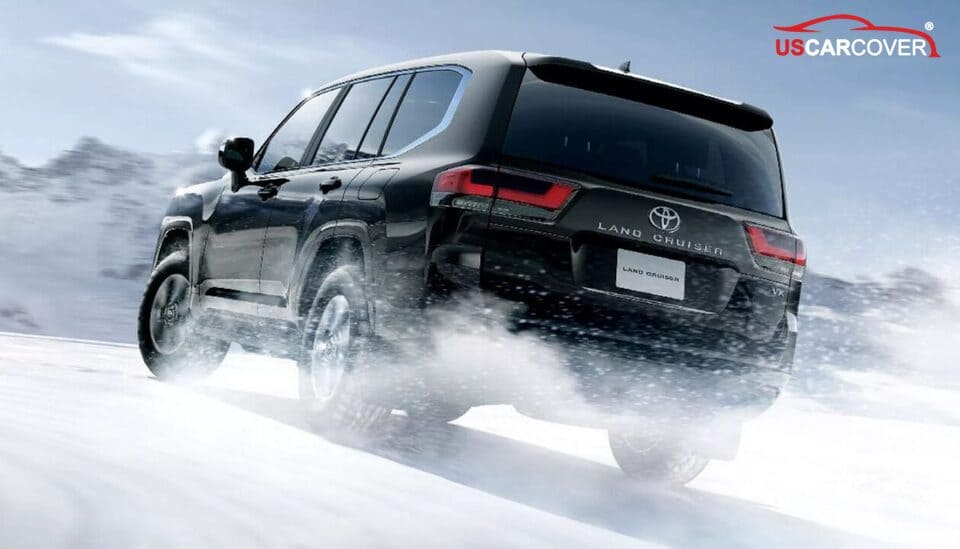
For off-road and real-world usability, Toyota adds practical camera and assist tech: a 360-degree camera, off-road camera views, crawl control, and downhill assist in select trims or packages, plus options like a head-up display and digital rearview mirror in higher grades. Those additions make trail navigation and low-speed maneuvers noticeably easier without overcomplicating the driving experience.
How does it stack up against premium rivals? Functionally, the LC 300 competes well—feature lists are comparable to luxury alternatives—but the user-experience polish can lag behind true luxury brands. Reviewers have noted small UX quirks (mismatched on-screen graphics and inconsistent interface styling) that don’t hurt capability but do remind you this is a capability-first vehicle, not a tech-showpiece. Still, for buyers who value reliability and real off-road usefulness over boutique UX flourishes, the Land Cruiser’s tech and safety package is an excellent, family-friendly balance.
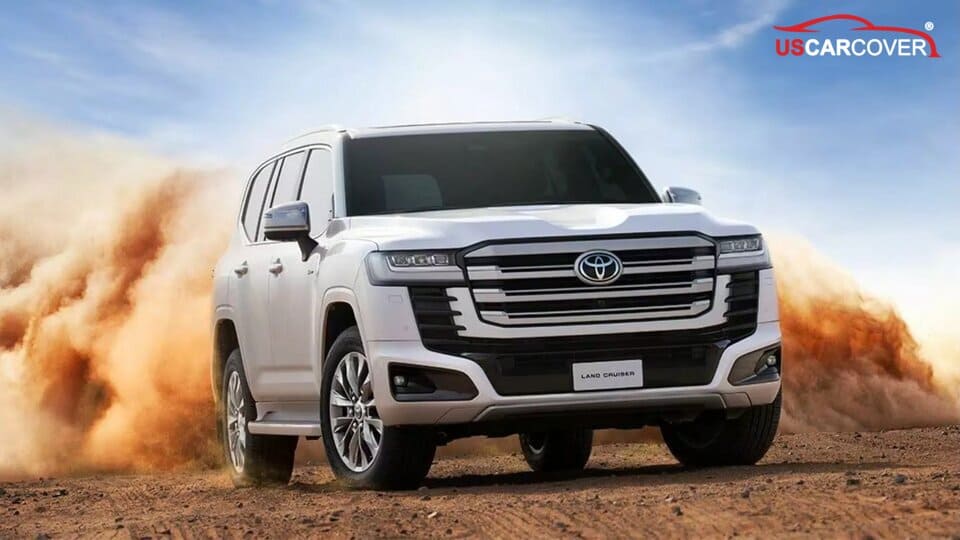
Market Position and Pricing in the U.S.
As a reviewer who watches pricing and segment moves closely, my read is that Toyota priced the 2026 Land Cruiser LC 300 to be serious yet sensible. The entry MSRP sits around $58,695, with well-equipped trims rising into the low to mid $60,000 range depending on options.
That pricing places the LC 300 squarely against near-luxury, capable rivals rather than mass-market crossovers. Buyers will compare it most often with the Jeep Wagoneer family and the Land Rover Defender. The Land Cruiser tends to undercut or match the base pricing of those premium rivals while leaning harder into proven Toyota mechanicals and durability.
Long-term ownership economics are a major part of the Land Cruiser’s value proposition. Toyota consistently ranks near the top for resale value and residual strength, which helps offset a higher upfront price over time. Expect better-than-average trade-in retention versus many luxury competitors. For running costs, independent estimates put five-year ownership and maintenance in a competitive band for large SUVs, though fuel and insurance add up in line with the vehicle’s size and capability.
Who will buy it and how the market will react? My expectation is steady demand from three groups: loyal Toyota buyers who prize reliability, outdoor and towing customers who need a real go-anywhere SUV, and buyers who want durable luxury without the flash. Dealers in markets with active outdoor lifestyles and high off-road interest should see the strongest sales. Early reviews and brand strength suggest Toyota will sell through modest allocations rather than flood the market, which should help keep resale values healthy.
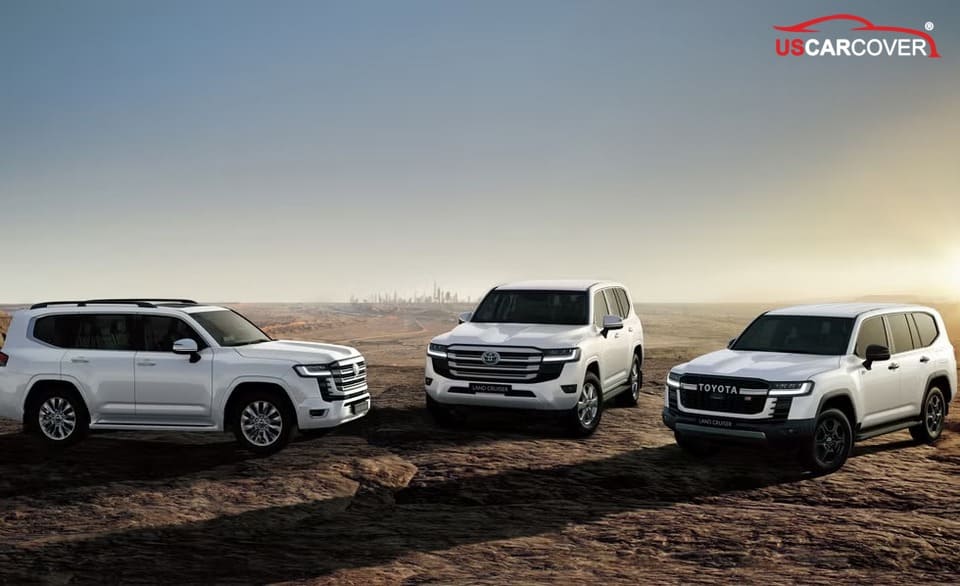
Bottom line from my perspective: the 2026 Land Cruiser LC 300 is positioned as a premium, capability-first SUV that competes on long-term value as much as on headline luxury features. For American buyers who plan to keep cars long term or who need real off-road and towing ability, its pricing and Toyota’s resale track record make it an attractive, pragmatic choice.
Related Articles: Ford F-150 Raptor vs Toyota Tacoma and Chevrolet Silverado 3500: Expert Review and Comparison
Pros and Cons from a Veteran Reviewer’s Perspective
As a long-time reviewer, I try to separate emotion from practicality. Here’s my concise read on what the 2026 Toyota Land Cruiser LC 300 gives you, and where you’ll trade things off.
Pros
- Legendary reliability and strong resale value. Toyota’s reputation for low long-term ownership costs and high resale retention is real, and the Land Cruiser name only amplifies that trust.
- Serious off-road DNA. The LC 300’s hybrid turbo powertrain, rugged drivetrain features, and body-on-frame architecture deliver usable torque and towing capability that back up its go-anywhere image.
- Refined comfort for a true workhorse. Higher trims bring ventilated and heated seats, an oversized touchscreen, and premium audio that make long trips pleasant without removing its durable character.
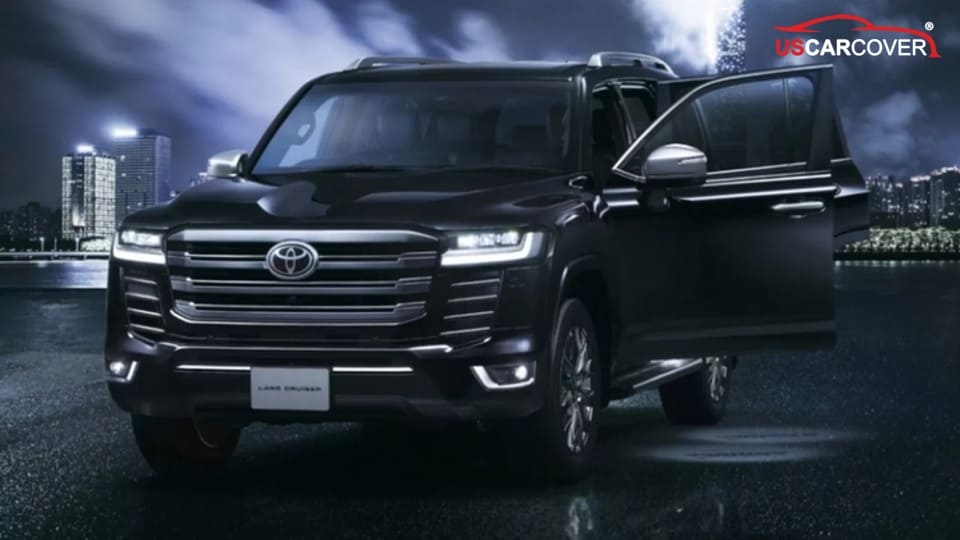
Cons
- Price point is premium. The LC 300 sits in near-luxury territory, which means you pay for capability and badge value. That makes it a bigger purchase than mainstream midsize SUVs.
- Fuel economy won’t amaze commuters. Expect combined figures in the low-20s mpg, which is reasonable for the class but not ideal for buyers focused on daily fuel savings.
- Potential overkill for strict city drivers. Its weight and trucklike presence make parking, tight maneuvering, and urban economy less graceful than smaller crossovers. If you never tow or go off-road, you might be buying capability you don’t use.
Honest take and buyer tradeoffs
If you want a durable SUV you can confidently take off the beaten path, tow a trailer, and keep for many years, the LC 300 is an easy recommendation from me. You gain long-term value, proven mechanicals, and real off-road competence. If your priority is low purchase price, best-in-class fuel economy, or nimble urban running, this model asks you to accept higher upfront cost, modest mpg, and a bigger footprint in exchange for capability. Choose based on how often you’ll actually use what it’s built to do.
Final Verdict: Is It Worth Buying?
Yes, with nuance. I believe the 2026 Toyota Land Cruiser LC 300 is worth buying for drivers who actually need its combination of proven durability, genuine off-road capability, and strong long-term value. If your priority is daily city commuting, the LC 300 may feel like more truck than you need, and its fuel and purchase costs can outweigh the benefits for strictly urban use.
Who should buy it
This is an ideal choice for adventurers who tow or travel off the beaten path, families who want a spacious, safe, and comfortable SUV built to last, and loyal Toyota buyers who prioritize reliability and resale value. It also suits buyers who plan to keep a vehicle for many years and value capability over trend-driven luxury.
My personal take and advice
As a long-time reviewer, I would pick one if I needed a dependable, go-anywhere SUV that balances modern comfort with rugged hardware. My practical advice is to test drive the exact trim and options you intend to buy, check towing and off-road packages if you need them, and compare total ownership costs against rivals. Buy it for capability and longevity, not for maximal fuel savings or tight-city maneuverability.
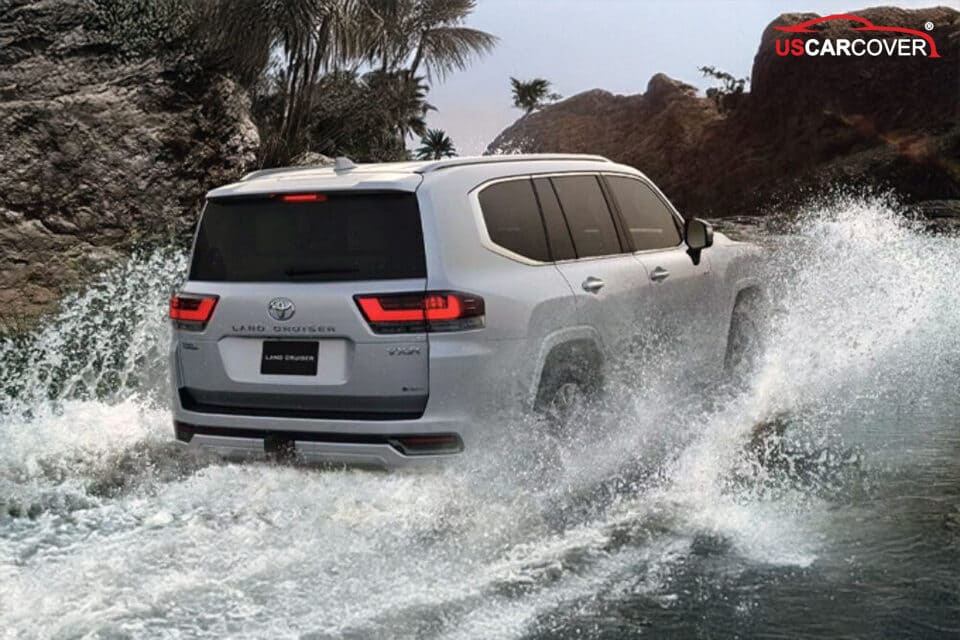
Related Articles: 2026 Jeep Cherokee: Full Review, Pricing, Specs, and Release Details
FAQ
Q: What is the starting price of the 2026 LC 300?
A: In the U.S. the 2026 Land Cruiser LC 300 starts at about $58,700 MSRP, with well-equipped trims rising into the low to mid $60,000s depending on options
Q: How fuel-efficient is it compared to rivals?
A: The LC 300’s EPA rating is roughly 22 mpg city / 25 mpg highway / 23 mpg combined, which is generally better than large, luxury-oriented rivals such as the Wagoneer and many Defender configurations that often land around the high teens to about 20 mpg combined. In short, you get competitive economy for a capability-first SUV, but do not expect compact-crossover numbers.
Q: Is it better for city driving or off-road adventures?
A: It is designed first and foremost as a capable off-road SUV that is also comfortable on the highway. If you routinely need true four-wheel-drive features, towing, or durability, it is an excellent choice. If your driving is almost exclusively tight urban errands and you prioritize nimble parking and maximum fuel savings, a smaller crossover will likely suit you better.
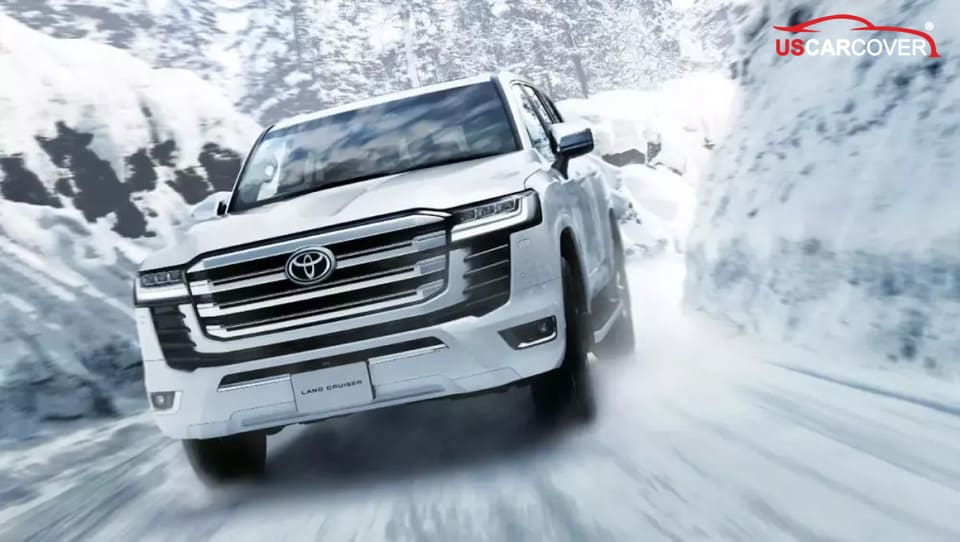
Q: What trims are available in the U.S.?
A: Toyota offers the LC 300 in two main U.S. grades, the retro-inspired 1958 and the more feature-rich Land Cruiser grade. Trim content and option packages vary, so check trim-specific equipment when you shop.
Q: How does it compare with the Jeep Wagoneer or Land Rover Defender?
A: The Land Cruiser trades on proven Toyota mechanicals, body-on-frame durability, and strong resale reputation. The Wagoneer leans more toward full-size cabin luxury and passenger capacity, while the Defender mixes boutique luxury with serious off-road tech but in a different stylistic package. If you value long-term reliability and traditional off-road hardware, the LC 300 is the pragmatic, capability-first pick. If you prioritize interior luxury or a particular brand aesthetic, the Wagoneer or Defender may win you over.

